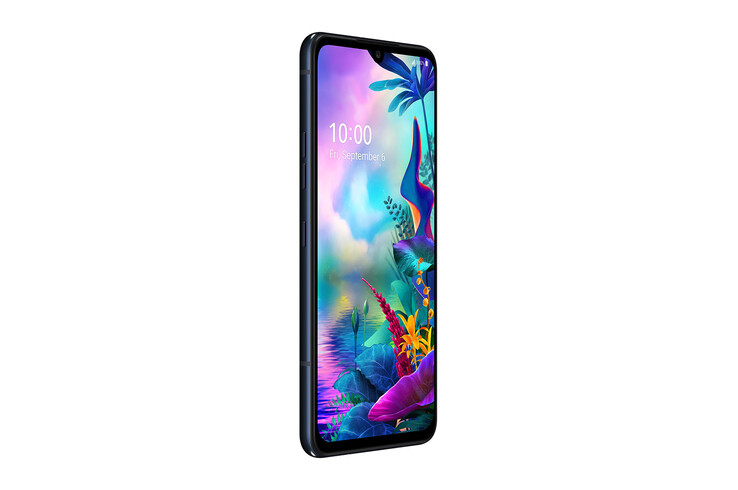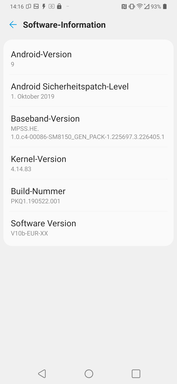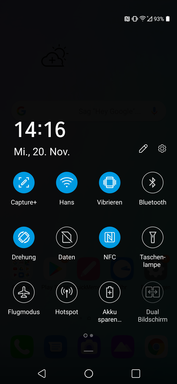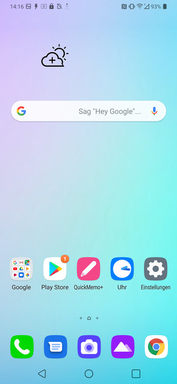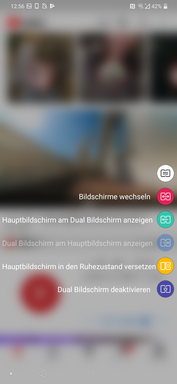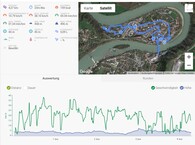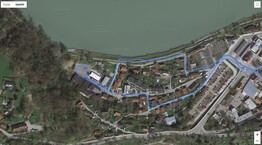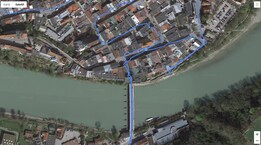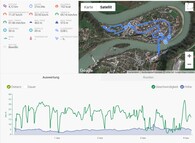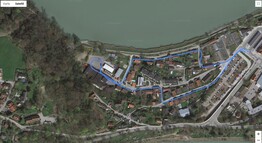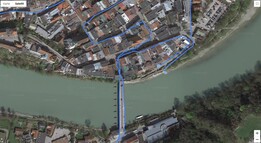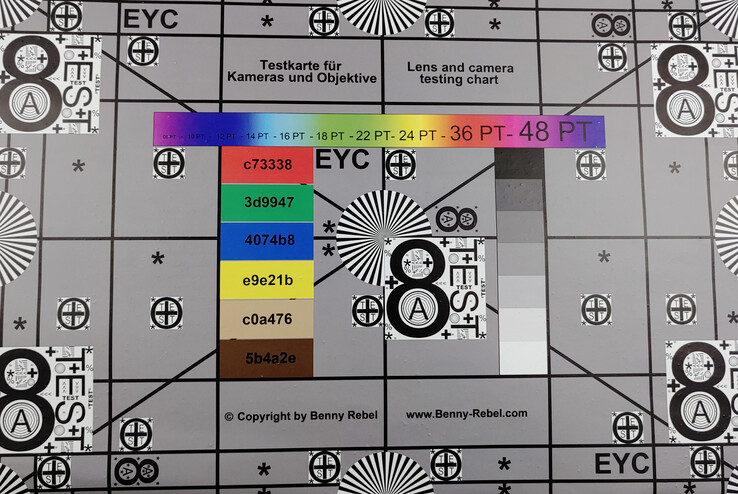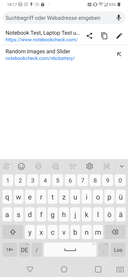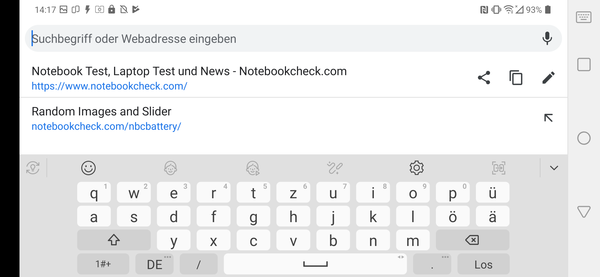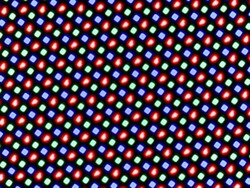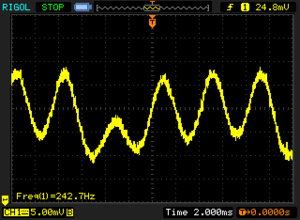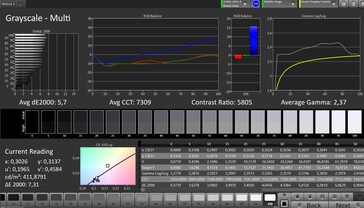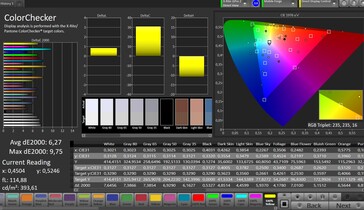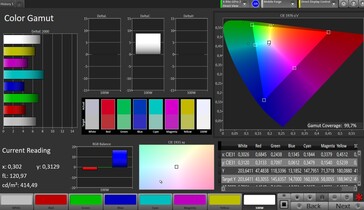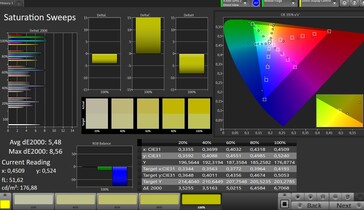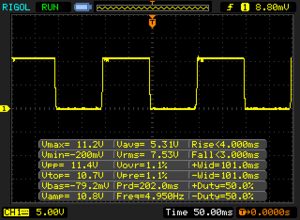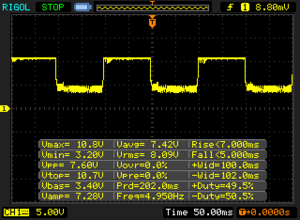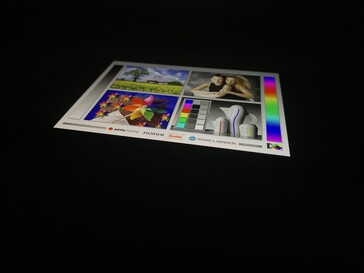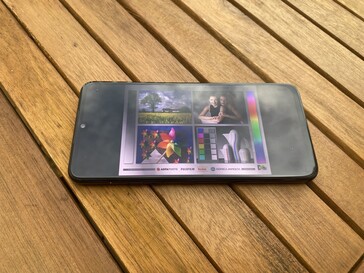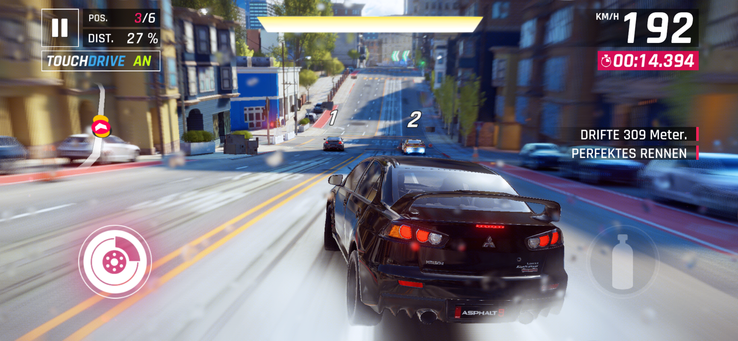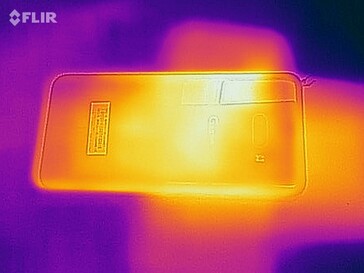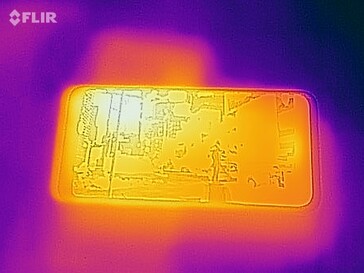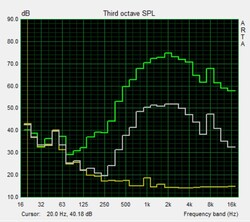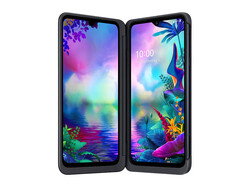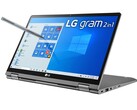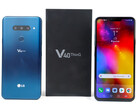LG G8X ThinQ Smartphone Review: A convertible among smartphones
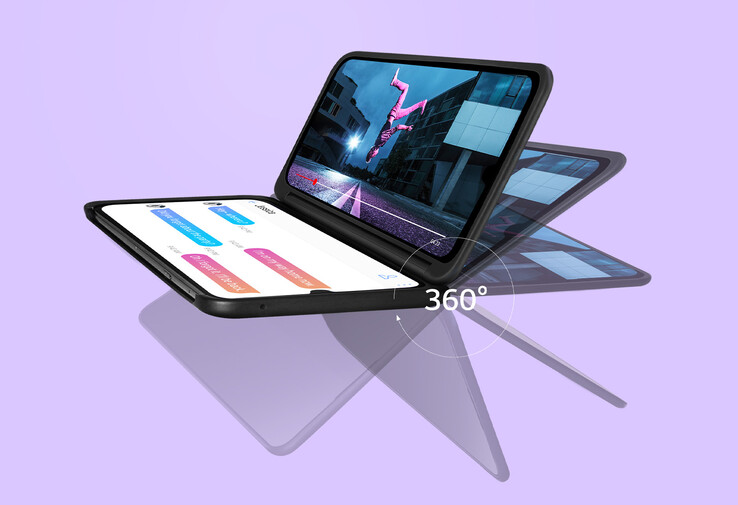
The Samsung Galaxy Fold and other foldable smartphones like the Huawei Mate X are undoubtedly innovative. However, numerous delays because of hardware issues and fragile displays demonstrate that foldable displays have a way to go before reaching maturity.
Meanwhile, LG has embraced foldable smartphones differently and in an unusual manner. The South Korean manufacturer debuted a dual-screen accessory for the V50 ThinQ earlier this year, but the G8X ThinQ marks the first time that LG has bundled such an accessory in the box. In essence, the concept of a dual-screen smartphone could have been executed years ago. All LG has done is created a case with a second screen built-in that connects to the main phone over USB Type-C.
The G8X ThinQ is a regular candy-bar smartphone first and a dual-screen device second, allowing you to use it how you see fit. You could, for example, use the G8X ThinQ for multitasking by running an app simultaneously on each screen. Alternatively, you could use it as a regular smartphone when you do not need that level of functionality. Strictly speaking, the G8X ThinQ has a third display too, which LG has placed on the front of the dual-screen case.
While the G8X ThinQ is an interesting concept, it must hold its own not only against conventional smartphones but also foldable ones. We have included a list of our comparison devices in the table below.
Device comparison
Rating | Date | Model | Weight | Drive | Size | Resolution | Price |
|---|---|---|---|---|---|---|---|
| 84.6 % v7 (old) | 11 / 2019 | LG G8X ThinQ SD 855, Adreno 640 | 192 g | 128 GB UFS 2.1 Flash | 6.40" | 2340x1080 | |
| 86.4 % v7 (old) | 10 / 2019 | Samsung Galaxy Fold SD 855, Adreno 640 | 276 g | 512 GB UFS 3.0 Flash | 7.30" | 2152x1536 | |
| 84.7 % v7 (old) | 07 / 2019 | Sony Xperia 1 SD 855, Adreno 640 | 178 g | 128 GB UFS 2.1 Flash | 6.50" | 3840x1644 | |
| 86.2 % v7 (old) | 10 / 2018 | Apple iPhone XR A12 Bionic, A12 Bionic GPU | 194 g | 128 GB NVMe | 6.10" | 1792x828 | |
| 82.9 % v7 (old) | 02 / 2019 | LG V40 ThinQ SD 845, Adreno 630 | 169 g | 128 GB UFS 2.1 Flash | 6.40" | 3120x1440 |
Case - Low-key, especially for a dual-screen smartphone
The G8X ThinQ is stylish yet understated. LG only sells the device in Aurora Black, a colour that does not help distinguish the G8X ThinQ from its contemporaries. The glossy glass back, slightly rounded corners and metal frame remind us of almost every other modern smartphone. Our review unit is sturdy though, while we appreciate that LG has made the rear camera housing flush with the back glass. Oddly, the left-hand side of the frame has a slightly larger gap between it and the glass back than the right-hand side does. This is a minor complaint though, as we only noticed it when we ran our finger across the frame. Overall, the G8X ThinQ is well-built, which is underlined by its IP68 and MIL-STD certifications.
Naturally, the LG G8X ThinQ becomes more impressive when you insert it into its dual-screen case. The two parts together weigh 329 g, but this should still be light enough for most people to hold comfortably with one hand. The case is 16 mm thick, making it just about thin enough to keep in most trouser pockets.
The primary and secondary screen look identical right down to the notch, although the latter's is just a black dot where a camera could have been. The secondary screen connects to the case via a long hinge that rotates 360°. The hinge moves smoothly throughout its whole range and keeps the second screen in place without any teetering. There is a third display on the reverse side too, which you can use as an ambient display when the device is on standby. The monochrome display shows notifications and the time among other information. LG has included an overly large cut-out for the cameras on the rear of the case too, which looks a bit odd.
Connectivity - Two screens, a microSD card reader and a headphone jack
The 6 GB of RAM with which LG has equipped the G8X ThinQ puts it on par with most other high-end smartphones, while it even surpasses those with 4 GB of RAM. 128 GB of storage has now become standard among modern flagships though and should still be enough for most people. The G8X ThinQ has a microSD card reader if you need more though. While we welcome that the device supports up to 2-TB cards and the exFAT file system, we are not fans of having to compromise between dual-SIM functionality and microSD card expansion.
Positively, there is a 3.5 mm jack onboard, a rarity among modern flagships. Expectedly, the G8X ThinQ supports Bluetooth 5.0 and has an NFC chip.
Software - Android 9.0 Pie customised for two screens
The G8X ThinQ ships with Android 9.0 Pie, atop of which LG has added a few customisations. The changes are minor though, so you should need no acclimatisation if you are familiar with Android. Our review unit had the October 1, 2019, Android security patch installed at the time of our tests, which is only one month out of date.
We expect that LG will deliver at least Android 10 to the G8X ThinQ. However, the company has a lousy reputation for releasing software updates, as we have covered several times this year. LG has committed to improving in this regard though, but it has not indicated when it plans to bring the latest version of Android to the handset.
LG has also tweaked Android for it to run across two displays. A small icon appears on the right-hand edge of the screen, for example, which allows you to switch the second screen on and off. It also contains options for moving content between screens, turning off the main screen and reducing brightness levels.
Frustratingly, LG continues to install not only in-house apps but also third-party ones that are also downloadable from the Google Play Store. There are even some advertising apps. Thankfully, LG allows these and third-party apps to be deleted.
Communication & GPS - Somewhat slow for the price
The G8X ThinQ offers slightly slower LTE connectivity than many modern flagships, although its retail price of US$699 offsets this somewhat in our opinion. The device maintained good network signal throughout our tests though, even when being used inside buildings.
The device also supports up to Wi-Fi 5 and delivered good download speeds with our Netgear Nighthawk AC1900 router. Its upload speeds are above average too, but they are well below those of our comparison devices.
| Networking | |
| iperf3 transmit AX12 | |
| Apple iPhone XR | |
| Samsung Galaxy Fold | |
| LG V40 ThinQ | |
| Sony Xperia 1 | |
| LG G8X ThinQ | |
| iperf3 receive AX12 | |
| LG V40 ThinQ | |
| Samsung Galaxy Fold | |
| LG G8X ThinQ | |
| Sony Xperia 1 | |
| Apple iPhone XR | |
The G8X ThinQ can only achieve a satellite fix with up to seven metres accuracy outdoors, which is noticeably worse than many other flagships. The device found a satellite reasonably quickly, though.
We also took our review unit on a bike ride to test its location accuracy against a Garmin Edge 520, one of our reference bike computers. While the G8X ThinQ deviated only by around 100 metres from the route that the Garmin plotted, it struggled to keep track of us in most scenarios. As the screenshots below demonstrate, the G8X ThinQ had us cycling over water rather than on a bridge, for example. Overall, the G8X ThinQ should be accurate enough for all general navigation tasks but not ones that need any degree of precision.
Telephone Features & Call Quality - No complaints here
While only the main smartphone has an earpiece and microphones, there are gaps in the dual-screen case for using both. Hence, you can make and receive calls with the G8X ThinQ in its case. Incidentally, LG preinstalls an in-house phone app, which looks and operates much like the Google one does. Its keypad sits more in the foreground than the one in the Google app does, though.
Our review unit has decent call quality, and its earpiece can get quite loud when needed. However, we noticed some distortion at high volumes, so we would recommend dropping the volume slightly for the clearest audio quality. We had no such issues with using the loudspeaker though, which also gets loud. The microphones transmit our voice clearly too, but they struggle to pick out quieter voices more when using the loudspeaker than when using the earpiece.
Cameras - A high-resolution front-facing camera
LG equips the G8X ThinQ with three cameras, two of which are on the back. The third is a 25 MP front-facing sensor, which is a comparatively high resolution for a selfie camera. Indeed, while its colour accuracy impressed us, we were less enamoured by the sharpness with which it captured fine details.
There is also a 12 MP primary rear-facing camera, which LG has complemented with a 13 MP ultra-wide-angle sensor. The default camera app provides an almost optical zoom between the two cameras, which is a nice touch. The primary camera impressed us with the level of detail that it captured, along with the delineation it created between light and dark areas. Likewise, the 12 MP sensor reproduces colours vividly. It is a different story in low-light conditions, though. While the camera exposes low-light scenes well, it struggles to keep objects in focus. Details are lacking too.
The G8X ThinQ can also record videos in up to 4K at 60 FPS with its primary rear-facing camera. Its image quality is at a good level, in our opinion. By contrast, the front-facing sensor can only record videos in up to 1080p at 30 FPS.
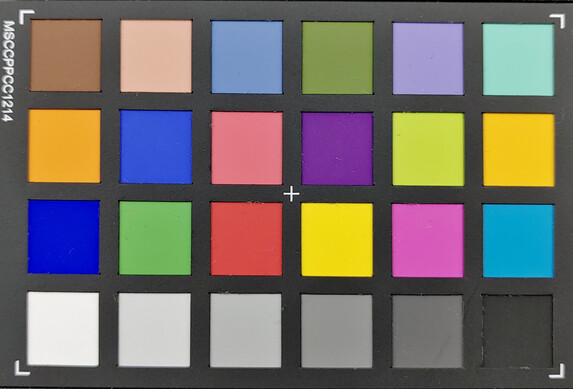
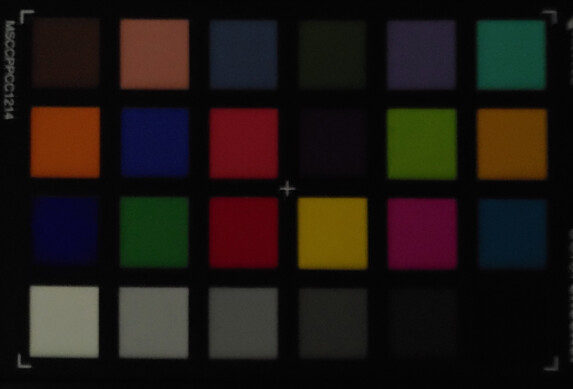
Accessories & Warranty - Several accessories and two-year warranty
LG does not sell any other accessories for the G8X ThinQ, except for the dual-screen and silicone cases that it includes in the box. The company includes an adapter for connecting a USB Type-C cable to the proprietary magnetic port on the bottom edge of the dual-screen case too.
LG includes a 24-month warranty with the G8X ThinQ. Please see our Guarantees, Return Policies & Warranties FAQ for country-specific information.
Input Devices & Operation - Precise touchscreens and an unreliable fingerprint scanner
Both of the touchscreens on our review unit worked perfectly throughout our tests. Each accurately reproduced our inputs and remained sensitive even into the corners of the display. There is a fingerprint sensor on board too, which sits underneath the primary display. While it responds reasonably quickly when activated, it is not as reliable as a conventional capacitive sensor.
Incidentally, we noticed a design flaw with the dual-screen case. LG has placed the volume rocker on the left-hand side of the G8X ThinQ, the same side where the hinge of the second screen sits. Correspondingly, the secondary display obscures the volume rocker at certain angles, so placing the latter on the right-hand side of the frame would have made more sense ergonomically speaking. There is also a dedicated hardware button to activate Google Assistant, as is the case with many modern LG flagships.
Display - Identical-looking displays with one key difference
The G8X ThinQ has two 6.4-inch AMOLED displays that resolve natively at 2340x1080. However, while the primary one reached a maximum average of 581 cd/m² according to X-Rite i1Pro 2, the secondary panel peaked at just 400 cd/m². While LG claims that the G8X ThinQ is HDR-certified, only its primary display gets bright enough to take advantage of that HDR certification.
As we have covered earlier, the G8X ThinQ can reflow content across both displays as one, continuous, 12.8-inch panel. However, the screen bezels and hinge interrupt the two displays, so it would probably make more sense to run different apps side-by-side instead.
| |||||||||||||||||||||||||
Brightness Distribution: 90 %
Center on Battery: 570 cd/m²
Contrast: ∞:1 (Black: 0 cd/m²)
ΔE ColorChecker Calman: 6.27 | ∀{0.5-29.43 Ø4.78}
ΔE Greyscale Calman: 5.7 | ∀{0.09-98 Ø5}
99.7% sRGB (Calman 2D)
Gamma: 2.37
CCT: 7309 K
| LG G8X ThinQ OLED, 2340x1080, 6.4" | Samsung Galaxy Fold Infinity Flex-Display (Dynamic AMOLED, 7,3") und Super AMOLED (4,6"), 2152x1536, 7.3" | Sony Xperia 1 OLED, 3840x1644, 6.5" | Apple iPhone XR IPS, 1792x828, 6.1" | LG V40 ThinQ OLED, 3120x1440, 6.4" | |
|---|---|---|---|---|---|
| Screen | 32% | 41% | 40% | 27% | |
| Brightness middle (cd/m²) | 570 | 531 -7% | 541 -5% | 672 18% | 567 -1% |
| Brightness (cd/m²) | 581 | 532 -8% | 543 -7% | 641 10% | 559 -4% |
| Brightness Distribution (%) | 90 | 97 8% | 99 10% | 92 2% | 89 -1% |
| Black Level * (cd/m²) | 0.35 | ||||
| Colorchecker dE 2000 * | 6.27 | 2.3 63% | 0.8 87% | 1.3 79% | 3.3 47% |
| Colorchecker dE 2000 max. * | 9.75 | 3.7 62% | 1.7 83% | 2.7 72% | 6.1 37% |
| Greyscale dE 2000 * | 5.7 | 1.5 74% | 1.2 79% | 2.2 61% | 1.1 81% |
| Gamma | 2.37 93% | 2.15 102% | 2.2 100% | 2.3 96% | 2.46 89% |
| CCT | 7309 89% | 6631 98% | 6601 98% | 6868 95% | 6495 100% |
| Contrast (:1) | 1920 |
* ... smaller is better
Screen Flickering / PWM (Pulse-Width Modulation)
| Screen flickering / PWM detected | 242 Hz | ||
The display backlight flickers at 242 Hz (worst case, e.g., utilizing PWM) . The frequency of 242 Hz is relatively low, so sensitive users will likely notice flickering and experience eyestrain at the stated brightness setting and below. In comparison: 53 % of all tested devices do not use PWM to dim the display. If PWM was detected, an average of 8111 (minimum: 5 - maximum: 343500) Hz was measured. | |||
While the main display gets comparatively bright, it is not that colour accurate. CalMAN, for example, shows that the display has comparatively high deviations from the sRGB colour space. Theoretically, both displays have infinite contrast ratios and a black value of 0 cd/m². All OLED panels share this property, though.
Display Response Times
| ↔ Response Time Black to White | ||
|---|---|---|
| 7 ms ... rise ↗ and fall ↘ combined | ↗ 4 ms rise | |
| ↘ 3 ms fall | ||
| The screen shows very fast response rates in our tests and should be very well suited for fast-paced gaming. In comparison, all tested devices range from 0.1 (minimum) to 240 (maximum) ms. » 20 % of all devices are better. This means that the measured response time is better than the average of all tested devices (20.2 ms). | ||
| ↔ Response Time 50% Grey to 80% Grey | ||
| 12 ms ... rise ↗ and fall ↘ combined | ↗ 7 ms rise | |
| ↘ 5 ms fall | ||
| The screen shows good response rates in our tests, but may be too slow for competitive gamers. In comparison, all tested devices range from 0.165 (minimum) to 636 (maximum) ms. » 24 % of all devices are better. This means that the measured response time is better than the average of all tested devices (31.6 ms). | ||
The G8X ThinQ has stable viewing angles, as the shot below demonstrates. While we noticed no brightness or colour distortions at acute angles, reflections may inhibit the display's readability somewhat.
The G8X ThinQ gets bright enough to use outdoors without too many issues. Reflections will prove its downfall on sunny days again though, so we would recommend finding a shady spot from which to read the screen, if possible. Likewise, the second screen will be even harder to read on a bright day because of its noticeably lower peak brightness.
Performance - Enough power for two screens
LG has equipped the G8X ThinQ with a Snapdragon 855 SoC, which is strictly speaking no longer Qualcomm's latest flagship processor. The chip manufacturer has since replaced the Snapdragon 855 with the Snapdragon 855+, although this offers more of a mid-generation performance boost than anything fundamentally new.
The G8X ThinQ performed excellently in synthetic benchmarks, but it cannot match the might of the Apple A13 Bionic in the iPhone 11 Pro Max. Overall, all apps should run smoothly in daily use, as should the UI. You should encounter no issues when running multiple apps simultaneously, either.
| PCMark for Android | |
| Work performance score (sort by value) | |
| LG G8X ThinQ | |
| Samsung Galaxy Fold | |
| Sony Xperia 1 | |
| LG V40 ThinQ | |
| Average Qualcomm Snapdragon 855 (10330 - 14439, n=19) | |
| Work 2.0 performance score (sort by value) | |
| LG G8X ThinQ | |
| Samsung Galaxy Fold | |
| Sony Xperia 1 | |
| LG V40 ThinQ | |
| Average Qualcomm Snapdragon 855 (8342 - 11440, n=19) | |
| GFXBench 3.0 | |
| on screen Manhattan Onscreen OGL (sort by value) | |
| LG G8X ThinQ | |
| Samsung Galaxy Fold | |
| Sony Xperia 1 | |
| Apple iPhone XR | |
| LG V40 ThinQ | |
| Average Qualcomm Snapdragon 855 (46 - 85, n=20) | |
| Average of class Smartphone (18 - 166, n=159, last 2 years) | |
| 1920x1080 1080p Manhattan Offscreen (sort by value) | |
| LG G8X ThinQ | |
| Samsung Galaxy Fold | |
| Sony Xperia 1 | |
| Apple iPhone XR | |
| LG V40 ThinQ | |
| Average Qualcomm Snapdragon 855 (50 - 102, n=20) | |
| Average of class Smartphone (12 - 606, n=157, last 2 years) | |
| GFXBench 3.1 | |
| on screen Manhattan ES 3.1 Onscreen (sort by value) | |
| LG G8X ThinQ | |
| Samsung Galaxy Fold | |
| Sony Xperia 1 | |
| Apple iPhone XR | |
| LG V40 ThinQ | |
| Average Qualcomm Snapdragon 855 (27 - 58, n=20) | |
| Average of class Smartphone (11 - 166, n=158, last 2 years) | |
| 1920x1080 Manhattan ES 3.1 Offscreen (sort by value) | |
| LG G8X ThinQ | |
| Samsung Galaxy Fold | |
| Sony Xperia 1 | |
| Apple iPhone XR | |
| LG V40 ThinQ | |
| Average Qualcomm Snapdragon 855 (35 - 71, n=20) | |
| Average of class Smartphone (8.4 - 413, n=158, last 2 years) | |
The G8X ThinQ did not impress as much in browser benchmarks as it did during synthetic CPU and GPU tests. As our comparison tables below demonstrate, the G8X ThinQ is more middle of the road in this regard.
| JetStream 1.1 - Total Score | |
| Apple iPhone XR (Safari Mobile 12.0) | |
| Samsung Galaxy Fold (Samsung Browser 10.1) | |
| Sony Xperia 1 | |
| Average Qualcomm Snapdragon 855 (84.4 - 120, n=17) | |
| LG G8X ThinQ (Chrome 78) | |
| LG V40 ThinQ (Chrome 71) | |
| Speedometer 2.0 - Result 2.0 | |
| Average of class Smartphone (15.2 - 643, n=128, last 2 years) | |
| LG G8X ThinQ (Chome 78) | |
| Sony Xperia 1 (Chrome 75) | |
| Average Qualcomm Snapdragon 855 (42.5 - 67.9, n=15) | |
| Samsung Galaxy Fold (Samsung Browser 10.1) | |
| LG V40 ThinQ (Chrome 71) | |
| WebXPRT 3 - Overall | |
| Average of class Smartphone (38 - 380, n=35, last 2 years) | |
| Apple iPhone XR (Safari Mobile 12.0) | |
| Samsung Galaxy Fold (Samsung Browser 10.1) | |
| Sony Xperia 1 (Chrome 75) | |
| Average Qualcomm Snapdragon 855 (90 - 129, n=20) | |
| LG V40 ThinQ (Chrome 71) | |
| LG G8X ThinQ (Chrome 78) | |
| Octane V2 - Total Score | |
| Average of class Smartphone (2228 - 121337, n=201, last 2 years) | |
| Apple iPhone XR (Safari Mobile 12.0) | |
| Samsung Galaxy Fold (Samsung Browser 10.1) | |
| Average Qualcomm Snapdragon 855 (17011 - 33918, n=21) | |
| LG G8X ThinQ (Chrome 78) | |
| Sony Xperia 1 (Chrome 75) | |
| LG V40 ThinQ (Chrome 71) | |
| Mozilla Kraken 1.1 - Total | |
| LG V40 ThinQ (Chrome 71) | |
| LG G8X ThinQ (Chrome 78) | |
| Average Qualcomm Snapdragon 855 (1852 - 2611, n=19) | |
| Sony Xperia 1 (Chrome 75) | |
| Samsung Galaxy Fold (Samsung Browser 10.1) | |
| Average of class Smartphone (257 - 28190, n=156, last 2 years) | |
| Apple iPhone XR (Safari Mobile 12.0) | |
* ... smaller is better
LG equips the G8X ThinQ with 128 GB of UFS 2.1 flash storage, which performed well in AndroBench. Our review unit achieved faster sequential write speeds than all our comparison devices, for example.
The device also had no problems in the corresponding microSD card benchmark. While the G8X ThinQ cannot meet the peak speeds that our Toshiba Exceria Pro M501 reference card can achieve, it is only a few MB/s short of the class average.
| LG G8X ThinQ | Samsung Galaxy Fold | Sony Xperia 1 | LG V40 ThinQ | Average 128 GB UFS 2.1 Flash | Average of class Smartphone | |
|---|---|---|---|---|---|---|
| AndroBench 3-5 | 19% | -30% | -8% | 55% | 395% | |
| Sequential Read 256KB (MB/s) | 705 | 1303 85% | 750 6% | 690 -2% | 761 ? 8% | 2223 ? 215% |
| Sequential Write 256KB (MB/s) | 497.1 | 394.5 -21% | 206.9 -58% | 203.9 -59% | 296 ? -40% | 1838 ? 270% |
| Random Read 4KB (MB/s) | 160.5 | 158.4 -1% | 147.3 -8% | 130.1 -19% | 154 ? -4% | 295 ? 84% |
| Random Write 4KB (MB/s) | 30.2 | 34.41 14% | 24.16 -20% | 23.36 -23% | 130.4 ? 332% | 335 ? 1009% |
| Sequential Read 256KB SDCard (MB/s) | 68.9 ? | 31.34 ? -55% | 84.9 ? 23% | 76 ? 10% | ||
| Sequential Write 256KB SDCard (MB/s) | 47.7 ? | 27.84 ? -42% | 63.1 ? 32% | 59.6 ? 25% |
Games - Flawless frame rates even while multitasking
The Adreno 640 remains a competent gaming GPU, as one would expect from a flagship chipset. The second screen allows the Snapdragon 855 to flex its muscles too, as our review unit ran Asphalt 9: Legends and a YouTube video simultaneously without a hiccup. This style of multitasking is probably better suited for when playing a slower style of game than Asphalt 9: Legends, but it stands as a proof of concept in our opinion. We encountered no problems with the touchscreens or sensors during our gaming tests, either.
Emissions - Cool under load, but meagre speakers
Temperature
The G8X ThinQ manages its surface temperatures reasonably well, even under sustained load. The front of the device peaks at 37.4 °C in one area but averages 35.7 °C, while the back of the device is a few degrees cooler. Hence, the device should never feel too hot to hold. There are no issues at idle, either.
(+) The maximum temperature on the upper side is 37.4 °C / 99 F, compared to the average of 35.2 °C / 95 F, ranging from 21.9 to 247 °C for the class Smartphone.
(+) The bottom heats up to a maximum of 35.2 °C / 95 F, compared to the average of 34 °C / 93 F
(+) In idle usage, the average temperature for the upper side is 27.4 °C / 81 F, compared to the device average of 32.9 °C / 91 F.
Speakers
The G8X ThinQ has stereo speakers, one of which is its earpiece. The main speaker sits on the underside of the device, meaning that most of the sound produced projects away from your ears rather than towards them. Regardless, the G8X ThinQ creates a stereo effect. Overall, the speakers get pleasantly loud, but the speakers in other high-end smartphones offer more depth in our opinion. In general, the speakers in the G8X ThinQ are passable, but there are smartphones on the market with better speakers.
On the other hand, you will rarely find a flagship with a dedicated headphone jack. The G8X ThinQ is a glorious exception in this regard, although you could connect external audio equipment via Bluetooth if that is more your thing. Both reproduced audio clearly in our tests.
LG G8X ThinQ audio analysis
(+) | speakers can play relatively loud (82.4 dB)
Bass 100 - 315 Hz
(-) | nearly no bass - on average 65.8% lower than median
(+) | bass is linear (0% delta to prev. frequency)
Mids 400 - 2000 Hz
(-) | nearly no mids - on average 65.8% lower than median
(+) | mids are linear (0% delta to prev. frequency)
Highs 2 - 16 kHz
(-) | nearly no highs - on average 65.8% lower than median
(+) | highs are linear (0% delta to prev. frequency)
Overall 100 - 16.000 Hz
(-) | overall sound is not linear (121.8% difference to median)
Compared to same class
» 90% of all tested devices in this class were better, 7% similar, 2% worse
» The best had a delta of 11%, average was 35%, worst was 134%
Compared to all devices tested
» 97% of all tested devices were better, 2% similar, 1% worse
» The best had a delta of 4%, average was 24%, worst was 134%
Samsung Galaxy Fold audio analysis
(+) | speakers can play relatively loud (85.2 dB)
Bass 100 - 315 Hz
(-) | nearly no bass - on average 23.9% lower than median
(±) | linearity of bass is average (12.2% delta to prev. frequency)
Mids 400 - 2000 Hz
(+) | balanced mids - only 2.9% away from median
(+) | mids are linear (4.3% delta to prev. frequency)
Highs 2 - 16 kHz
(+) | balanced highs - only 2.8% away from median
(+) | highs are linear (2.7% delta to prev. frequency)
Overall 100 - 16.000 Hz
(±) | linearity of overall sound is average (16.7% difference to median)
Compared to same class
» 8% of all tested devices in this class were better, 6% similar, 86% worse
» The best had a delta of 11%, average was 35%, worst was 134%
Compared to all devices tested
» 28% of all tested devices were better, 7% similar, 65% worse
» The best had a delta of 4%, average was 24%, worst was 134%
Power Management - Strong runtimes in single-screen mode
Power Consumption
The G8X ThinQ is comparatively thirsty when idling, while its peak power consumption under load is on the higher side too. Moreover, we measured power draw increasing by around 80 - 90% with the second screen attached. The second screen has no dedicated battery, so expect runtimes to take a hit if you use the dual-screen functionality all day.
| Off / Standby | |
| Idle | |
| Load |
|
Key:
min: | |
| LG G8X ThinQ 4000 mAh | Samsung Galaxy Fold 4235 mAh | Sony Xperia 1 3330 mAh | Apple iPhone XR 2942 mAh | LG V40 ThinQ 3300 mAh | Average Qualcomm Snapdragon 855 | Average of class Smartphone | |
|---|---|---|---|---|---|---|---|
| Power Consumption | 25% | 8% | -10% | 12% | 1% | -11% | |
| Idle Minimum * (Watt) | 1.1 | 0.6 45% | 1 9% | 0.61 45% | 0.87 21% | 0.939 ? 15% | 0.848 ? 23% |
| Idle Average * (Watt) | 1.49 | 0.85 43% | 1.48 1% | 2.67 -79% | 1.39 7% | 1.506 ? -1% | 1.434 ? 4% |
| Idle Maximum * (Watt) | 1.76 | 1 43% | 1.56 11% | 2.69 -53% | 1.41 20% | 1.799 ? -2% | 1.618 ? 8% |
| Load Average * (Watt) | 4.2 | 4.47 -6% | 3.76 10% | 4.34 -3% | 3.96 6% | 4.61 ? -10% | 7.01 ? -67% |
| Load Maximum * (Watt) | 9.2 | 9.02 2% | 8.48 8% | 5.66 38% | 8.6 7% | 9.04 ? 2% | 11.3 ? -23% |
* ... smaller is better
Battery Life
LG has equipped the G8X ThinQ with a 4,000 mAh battery, which gives the device excellent battery life. Our review unit lasted for 15:30 hours in our practical Wi-Fi battery life test, for example, putting it ahead of all our comparison devices. Do not expect as good battery life with the second screen always activated, though.
The bundled charger delivers at least 17 W from the mains, but our review unit still takes around two hours to reach full charge. LG has included a connector on the dual-screen case for charging the device too, which is handy. The connector is not a Type-C port as you may have expected, though. Instead, LG has opted for a proprietary magnetic connector, the Type-C adapter for which it has included in the box. Having a magnetic charging connector is novel, but its magnetism could be slightly stronger in our opinion. You may find the magnetic adapter breaking the connection with the device if you use too rigid of a USB cable, for instance.
| LG G8X ThinQ 4000 mAh | Samsung Galaxy Fold 4235 mAh | Sony Xperia 1 3330 mAh | Apple iPhone XR 2942 mAh | LG V40 ThinQ 3300 mAh | |
|---|---|---|---|---|---|
| Battery runtime | -35% | -52% | -2% | -45% | |
| WiFi v1.3 (h) | 15.5 | 10 -35% | 7.4 -52% | 15.2 -2% | 8.5 -45% |
| Reader / Idle (h) | 28.7 | 17.8 | 49.5 | 19 | |
| H.264 (h) | 17.1 | 11.9 | 16.9 | 11 | |
| Load (h) | 5.3 | 4.1 | 4.5 | 5.3 |
Pros
Cons
Verdict - A good dual-screen phone
The LG G8X ThinQ is a flagship smartphone with a concept that distinguishes it within a crowded market. Allowing people to choose between one and two screens without compromising is a great idea that LG has executed well. While most people will probably use the two screens for multitasking, the G8X ThinQ can split a single app over both screens. The device can even provide contextual information on its secondary screen that would normally be hidden in menus on conventional smartphones. Both AMOLED displays are bright, while a stable hinge connects the two. LG has modified Android 9.0 Pie appropriately too.
However, the G8X ThinQ seems less remarkable when using it as a traditional smartphone. While its dual rear-facing cameras are good in bright environments, they both struggle in low-light scenarios. Likewise, its GPS module and LTE speeds are comparatively slow for a 2019 flagship too. Compounding these shortcomings is LG's update policy, which is worse than many Android OEMs.
We would recommend the LG G8X ThinQ to those who have always wanted a full-fledged second screen without the frailties that foldable smartphones have. You must overlook minor shortcomings though, like its below-par speakers.
Positively, its primary screen is bright, while it remains cool under sustained load too. Likewise, the G8X ThinQ delivers excellent performance and battery life, although the latter only applies when running it in single-screen mode. In short, the G8X ThinQ's special feature helps offset its shortcomings. If you are intrigued by the concept of a dual-screen smartphone, then the G8X ThinQ is a high-quality option with a few quirks.
LG G8X ThinQ
- 09/03/2022 v7 (old)
Florian Schmitt




